An Di: The Only Notable Vietnamese Bistro in Tokyo With a Poetic Wine List
A gourmet taste of Vietnam inspired by a Japanese Sommelier
An Di is more than Banh Mi!
When discussing the origin of An Di, the classic chicken and egg debate is sure to come up, because most people would never know whether it was the wine or the food that came first when creating this restaurant. Surely, both lend themselves to each other, but it is clear to me that the wine was most definitely the real inspiration for the birth of this fine restaurant located near Gaienmae station.
View this post on Instagram
The Wine
Owner Motohiro Okoshi has studied wine over the last twenty years and is the sommelier for some of the most impressive wine programs all over Tokyo. When you first sit down at the restaurant and are presented with the wine list, you immediately know you are in good hands.
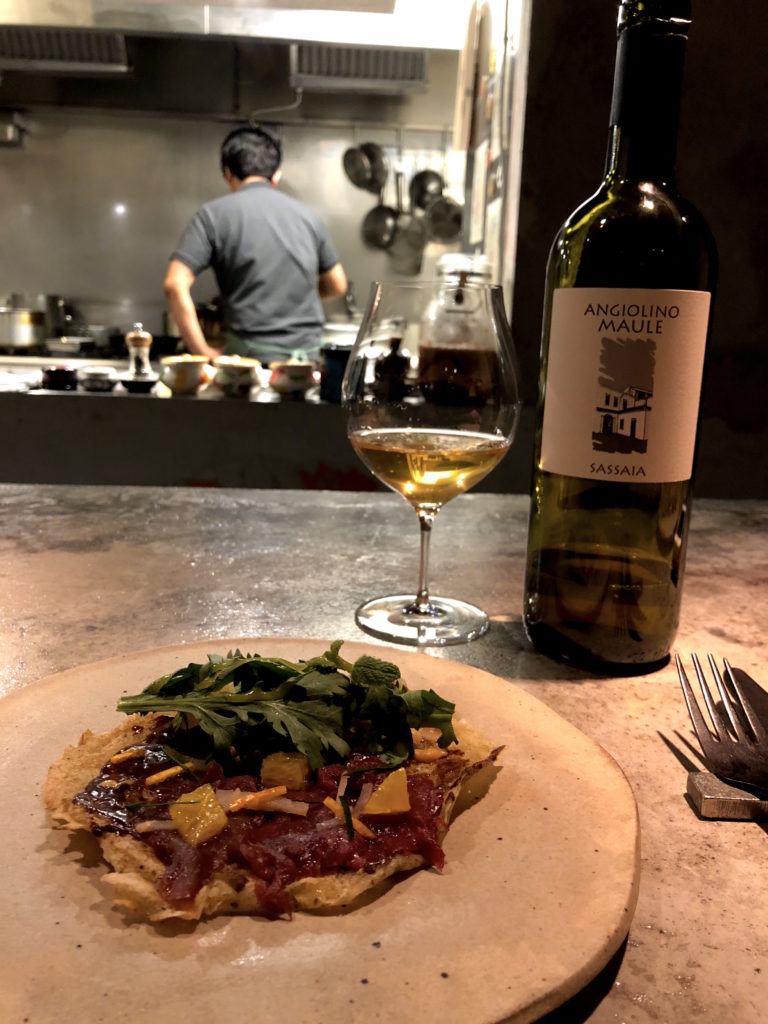
An Di’s original Banh xeo paired with orange wine.
It’s a wine menu brilliantly categorized by flavor profile in the smartest way I’ve ever seen. Unlike most arbitrary and boring wine lists, which categorize wines by region, Okoshi categorizes his wine in an exciting, informative, and very creative way.
View this post on Instagram
As you sit and read the descriptions, you feel as though you are reading poetry about the wines themselves. Categories on the wine menu like “Unique Deeply Outstanding Reds,” “Savory Soft Sometimes Nobly Oxidized White Wine,” and “Mineral Salty Thick White Wine” read like a poetic soliloquy about harems in the form of grapes. And it really starts to beg the question as to “why aren’t all restaurants categorizing their wines like this!?”
The Staples
An Di is considered to be a Vietnamese restaurant with Japanese and, of course, French influences, but I think it’s broader than that in its Southeast Asian influence. Take their signature tea leaf salad for example. This beautiful deconstructed salad inspired by Burmese and Thai ingredients is a colorful medley of flavors.
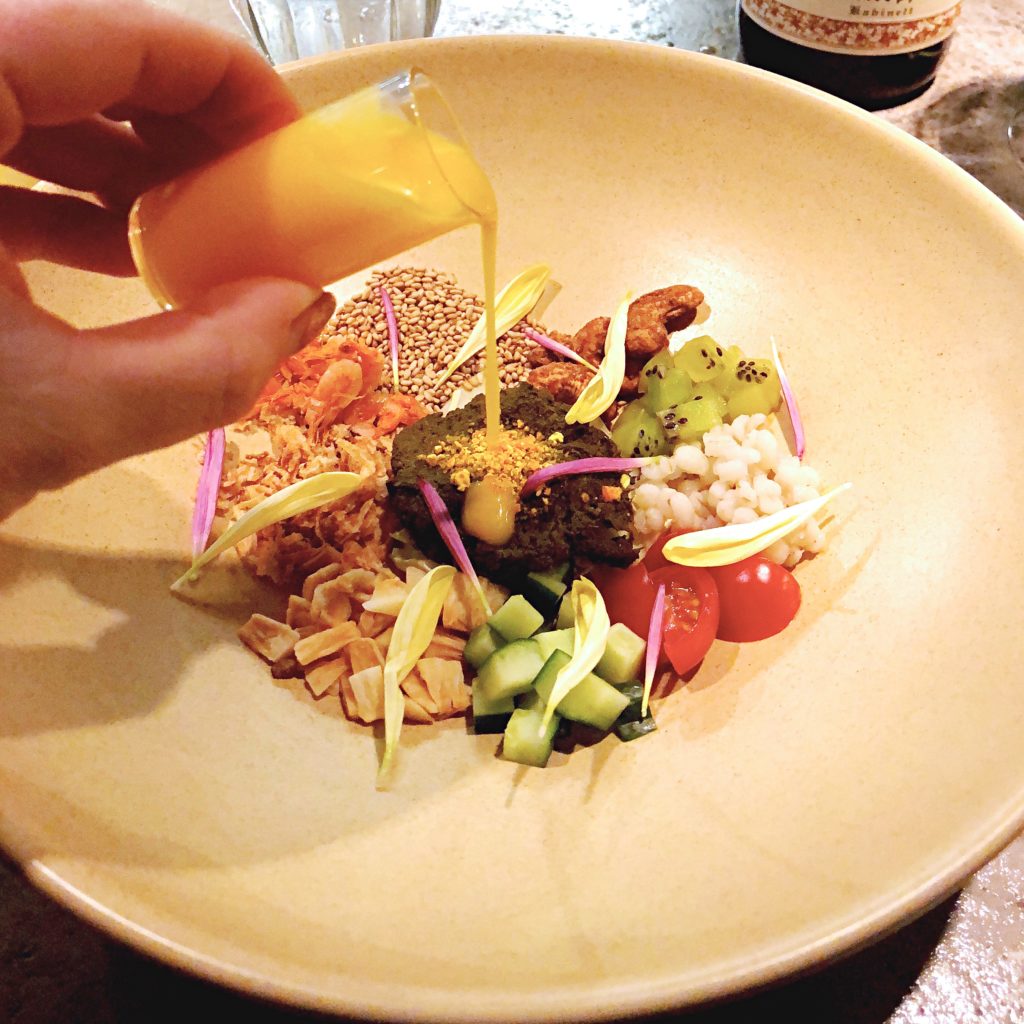
The ultra colorful and delicious tea leaf salad
Circled around a mound of fermented green tea leaves from Fukuoka, lies toasted coconut, tomatoes, cucumbers, kiwis, dried shrimps, rice puffs, toasted sesame seeds, candied cashews, and more. The tea leaves have a deep earthy taste but are nicely complemented by a side of orange mikan dressing, which is sweet, but also complex in of itself. The wine pairing to go along with the salad was a German Riesling, which also added a bit of sweetness to counteract the bitter green tea leaves.
An Di has a wine menu brilliantly categorized by flavor profile in the smartest way I’ve ever seen.
Other An Di menu staples are the spring rolls and the pho. The spring rolls change seasonally, featuring whatever fresh vegetables and fish are available to go inside each spring roll. The spring rolls served to me were stuffed with fresh clams and winter vegetables from Kyoto along with a lemongrass dipping sauce.
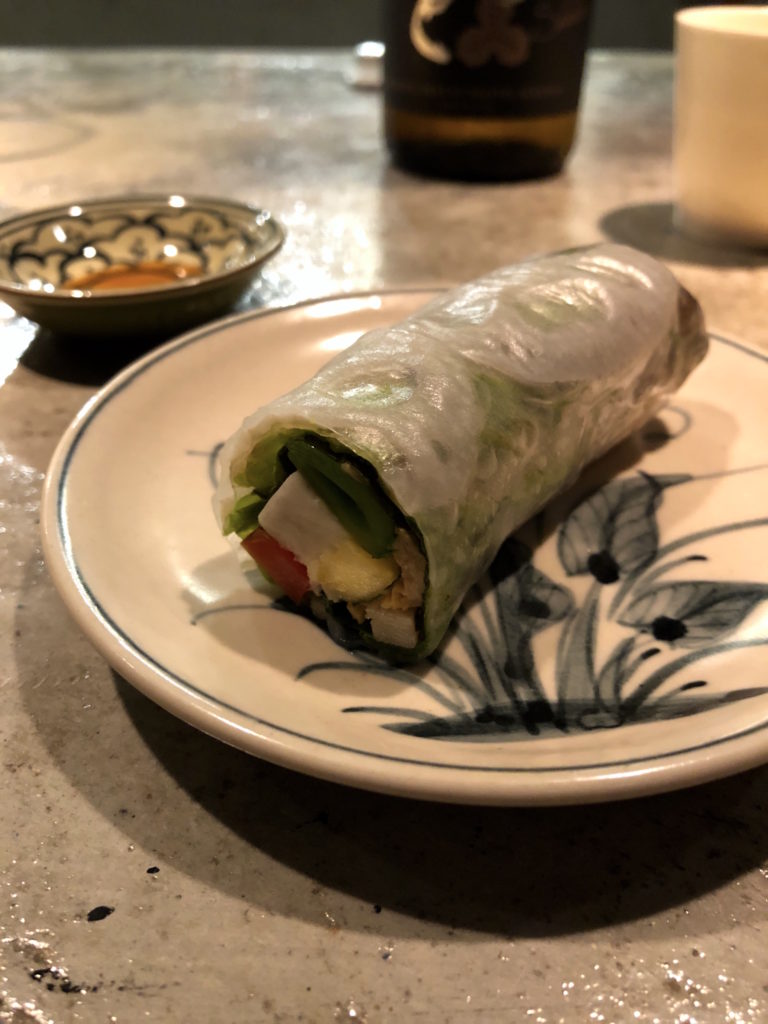
An Di’s seasonal spring rolls
Since Kyoto is known for its simplistically perfect vegetable fare, these spring rolls were paired with a Junmai sake from Kyoto, all of which rounded out into a nice light citrus flavor experience, and left me wanting more.
The chicken pho is the final staple you normally end your meal with. What started out as a beautiful delicate chicken stock, quickly turned into a deep funky flavor bomb when I decided to add the spoonful of sake lees that accompanied my pho on the side.
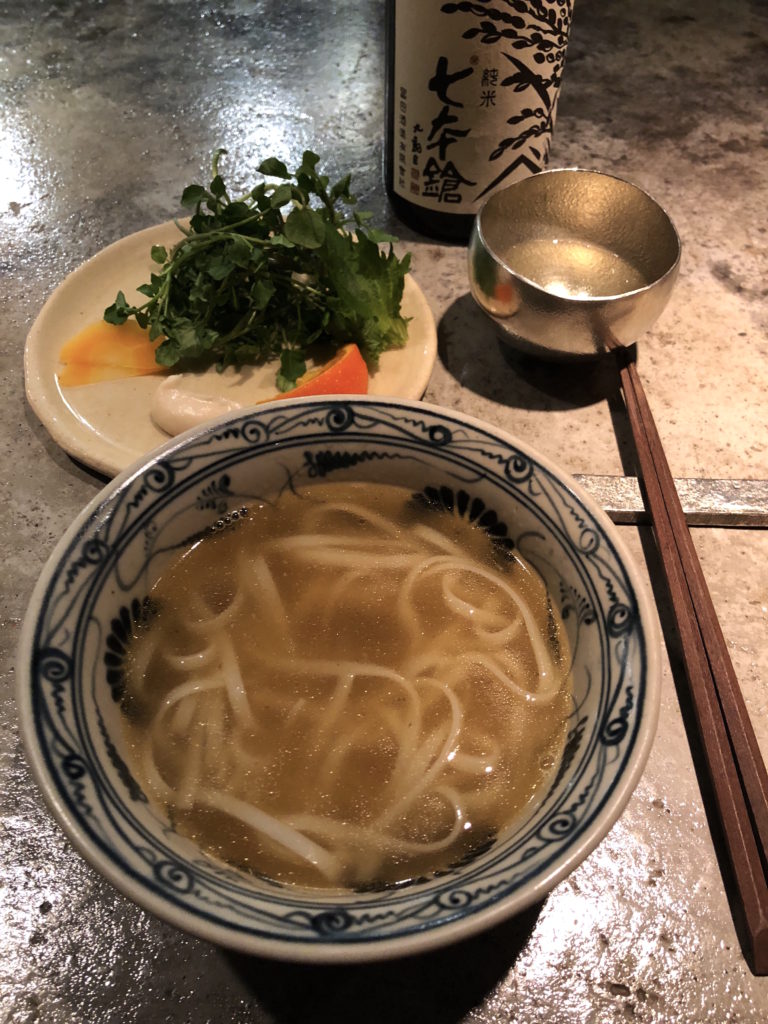
Chicken pho
The squeeze of red lemon helped cut through some of the funk and the warm sake that paired with this dish also added some more citrus notes. I normally don’t love warm sake, but I loved this particular one and how it paired so nicely with the pho.
The Seasonals
An Di’s menu changes with each season, so generally there are about four menu rotations per year, but the aforementioned staples are there year-round.
I would have loved to try the fried chicken and pork ribs, but alas, the seasonal prefix menu served venison as the main course, which underwhelmed me. One seasonal dish that did delight me, however, was the horse meat banh xeo with fermented garlic, citrus, and kaffir lime.
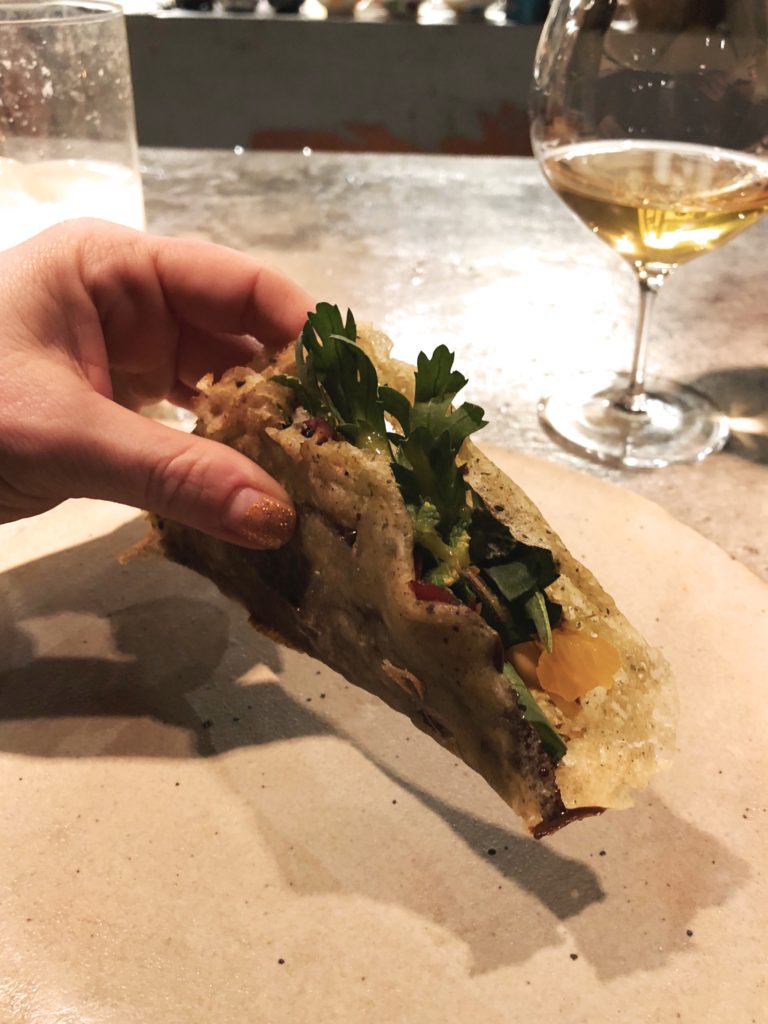
Banh xeo with horse meat, fermented garlic, citrus, and kaffir lime, served with orange wine.
This dish was clean, fruity, earthy and herby all at once. It had some serious umami without using much salt at all, and having to eat it with your hands was a fun, playful idea. I only wished the outer shell had more of a crunch to make it easier when eating. The bahn xeo dish also featured my favorite wine pairing, because the orange wine they served from Veneto, Italy magically brought out every complex citrus flavor in the dish.
The Vibe
The decor is a bit industrial but has a natural rustic vibe as well. And although it’s a very small space, it is very lively and loud in the restaurant. I suggest trying to get a seat at the counter because it faces the open kitchen, which is always great for a little dinner show. This also allows you to interact with the staff more, who is incredibly friendly and welcoming.
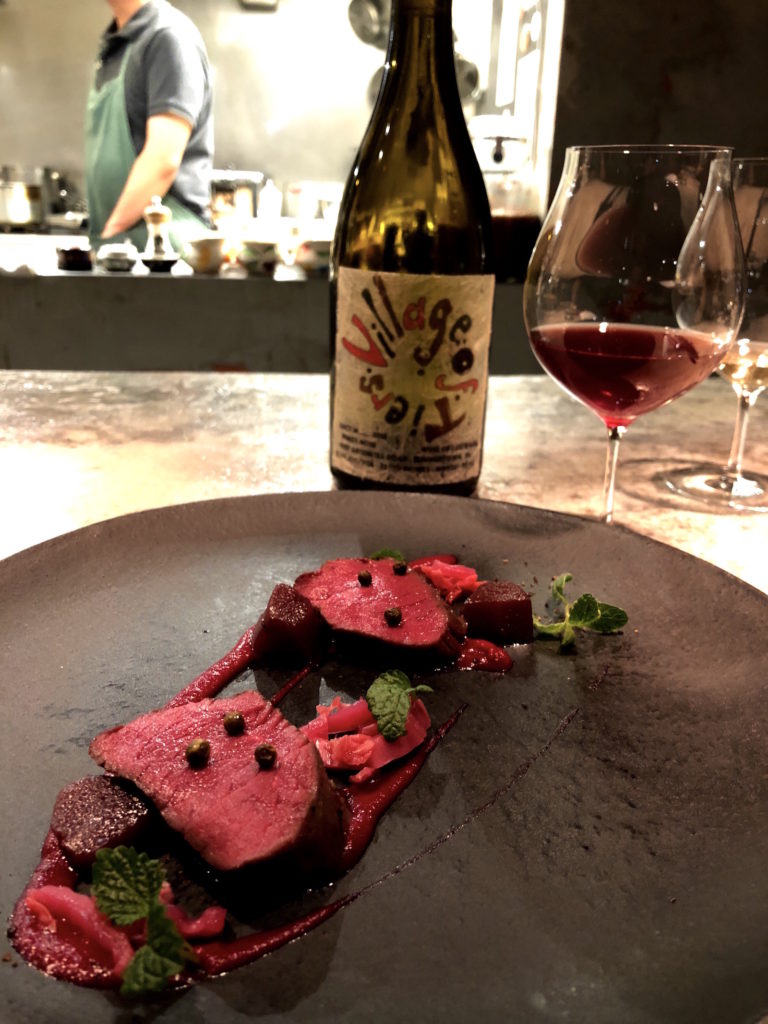
Venison paired with red wine as the main course dish
With less than ten tables and only six counter seats, An Di is not the easiest restaurant to get into. Luckily, it is still slightly under the radar, but Japanese celebrities and natural wine aficionados are catching on quick. Some would even say they are slowly on their way to a Michelin star. Either way, An Di is definitely one to watch!
The Deets
An Di
Address: 3-42-12 Jingumae, Shibuya-ku, Tokyo
Tel: 03-6447-5447
Business Hours: (Lunch) Sat-Sun 12 p.m. – 1:30 p.m. (Dinner) Tues-Sun 6 p.m.–11 p.m. Closed Mondays.
Average Cost: ¥6,500 dinner course. ¥5,300 wine pairing. A la carte dishes range from ¥1,200-¥3,200. Cocktails and glasses of wine start at ¥900.
Smoking/Non-smoking: Non-smoking












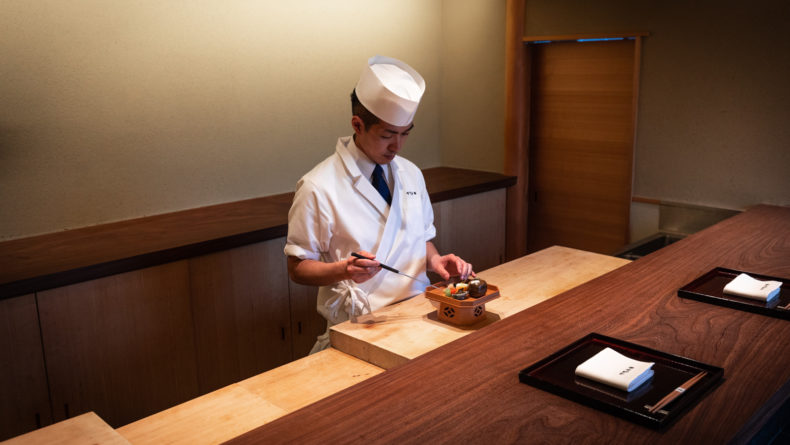
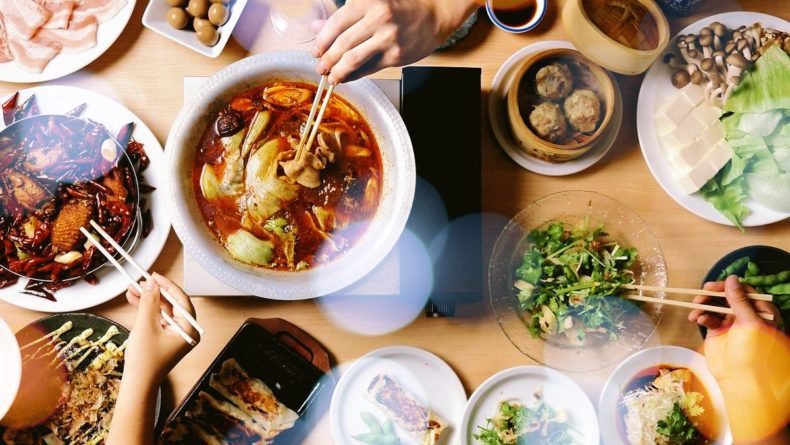
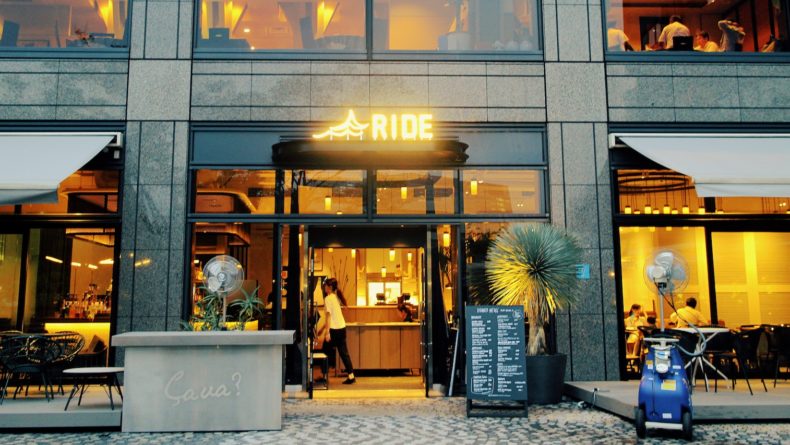
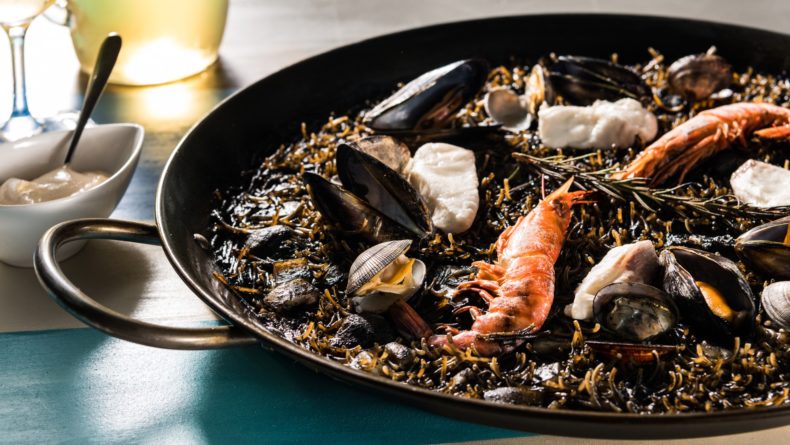
Leave a Reply